Popsicles, or “pops” are not just for kids! These Low FODMAP Peaches and Cream Popsicles with Raspberries are beloved by kids and adults alike. They feature a low FODMAP portion of yellow peaches and honey, in addition to thick vanilla yogurt. They are creamy and a little sweet, but not too sweet. And the mashed raspberries add color, texture and flavor. I was almost going to call these “peach melba” after the famous peach and raspberry dessert, but I couldn’t resist the “peaches & cream” title.
Peaches & FODMAPs
For a full explanation of both Monash University’s and FODMAP Friendly’s approach to peaches, please read our article, Explore An Ingredient: Peaches.
You do need to peel them and the directions are in the article linked above under the How To Use section.
We use yellow peaches for these Low FODMAP Peaches and Cream Popsicles with Raspberries because Monash has lab tested them and declared them low FODMAP in 30 g amounts – the largest amount of any lab tested peaches (white peaches for instance have a higher FODMAP content).
This is what 240 g of yellow peaches looks like. That is a plenty to bring peachy flavor and color to our pops!
You will be starting with a total of 3 peaches, but you want to end up with 240 g of chopped peaches. The recipe serves 8. This finished dish ends up with a low FODMAP amount of peaches within each popsicle.
PS: if you don’t have a digital scale yet, we highly recommend this one from OXO.
Honey & FODMAPs
The short answer is yes, and it depend on your honey. Monash University has lab tested clover honey as well as what they simply label as “honey” and report different findings. We have used “honey” for this recipe, which is low FODMAP at 1 teaspoon or 7 g per serving.
Please read our article, Is Honey Low FODMAP? for much more information on honey.
Choose Your Popsicle Molds Wisely
Péopsicle molds can vary hugely in volume and for this recipe I suggest ones with a smaller volume. The ones pictured have a 2-ounce (60 ml) volume. This allows us to have the peach mixture and each pop will still remain low FODMAP. UPDATE: the one’s I used are called KidCo Baby Steps Healthy Snack Frozen Treat Tray and are currently unavailable. These ones in this link are the closest I have found to use as a substitute.
How To Make Low FODMAP Peaches and Cream Popsicles
You need a blender to make these. We use a VitaMix in the Test Kitchen.
Make sure your yogurt is very thick. I like Siggi’s.
The Siggi’s “plain” is unsweetened. Their vanilla contains agave. Agave is low FODMAP in small 1 teaspoon portions. The recipe calls for 1 cup (245 g) of yogurt and makes 8 pops, which means each serving contains 2 tablespoons of yogurt. If you can tolerate a small amount of agave, then do try the Siggi’s. Otherwise, other vanilla lactose-free yogurt can be used; you can also use the plain Siggi’s and leave the recipe as is, or add a little sugar to the blender.
Begin by placing the peaches, yogurt, honey and lemon juice in your blender carafe.
Blend until smooth; set aside.
Place the raspberries, honey and lemon juice in a small mixing bowl.
Mash together with a fork until juicy.
Spoon a small amount of the mashed raspberries into each mold.
Fill molds halfway with yogurt/peach mixture, add more berry purée, then top off with more yogurt mixture. Insert wooden sticks or the holders that come with your popsicle set.
Then, DO NOT jolt the table and make a mess like I did – see below.
Insert wooden sticks or the sticks that came with your popsicle mold.
Freeze overnight and your pops are ready!
For More Peach Recipes
We are starting to add more and more recipes using small amounts of peaches. For now try these:
- Strawberry Peach Crisp
- Duck Breasts with Red Wine & Peaches
- Peach Iced Tea
- Dutch Baby with Peaches & Ginger
- Grilled Tomato Peach Salsa
For More Raspberry Recipes
Try these:
- The Berries Pie
- Champagne Gelée with Raspberries
- Crumb Topped Berry Slab Pie
- Chocolate Pavlova with Kiwis & Raspberries
- Raspberry Truffle Cake
- …and so many more!
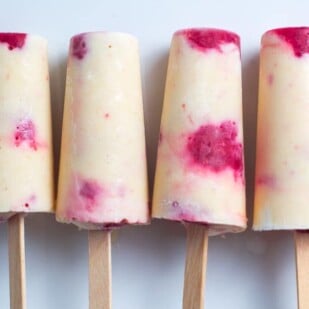
Low FODMAP Peaches and Cream Popsicles with Raspberries
Popsicles, or “pops” are not just for kids! These Low FODMAP Peaches and Cream Popsicles with Raspberries are beloved by kids and adults alike. They feature a low FODMAP portion of yellow peaches and honey, in addition to thick vanilla yogurt. They are creamy and a little sweet, but not too sweet. And the mashed raspberries add color, texture and flavor. I was almost going to call these “peach melba” after the famous peach and raspberry dessert, but I couldn’t resist the “peaches & cream” title.
Low FODMAP Serving Size Info: Makes 8 Pops; 1 Popsicle per serving
Ingredients:
- 8 ½- ounces (240 g) chopped yellow peaches, peeled stones discarded; buy 3 peaches to be safe
- 1 cup (245 g) thick vanilla lactose-free yogurt
- 1 tablespoon plus 1 teaspoon honey, divided
- ½ teaspoon lemon juice, divided
- 2 ¾- ounces (75 g) fresh raspberries
Preparation:
-
Have your popscile mold ready. Place chopped peaches, yogurt, 1 tablespoon of honey and ¼ teaspoon lemon juice in your blender carafe. Blend until smooth; set aside.
-
In a small bowl mash the raspberries with 1 teaspoon honey and remaining ¼ teaspoon lemon juice. Spoon a small amount of the mashed raspberries into each pop mold.
-
Fill molds halfway with yogurt/peach mixture, add more berry purée, then top off with more yogurt mixture. Insert wooden sticks or the holders that come with your popsicle set.
-
Freeze overnight and your pops are ready! Run warm water around the outside of the molds to make them easier to unmold. Pops can remain frozen for up to 4 days. If you have used wooden sticks, cover the frozen pops with plastic wrap to protect the open ends upon storage.
Notes:
Tips
FODMAP Information
Our recipes are based on Monash University and FODMAP Friendly science.
- Honey: Honey has been lab tested by both FODMAP Friendly and Monash University. FODMAP Friendly gives it a “Fail” at 2 teaspoons (15 g). Monash says that while clover honey specifically is only low FODMAP at ½ teaspoon (3 g), they state that honey is low FODMAP in 1 teaspoon (7 g) amounts.
- Raspberries: Raspberries have been lab tested by both Monash University and FODMAP Friendly. FODMAP Friendly gives them a “Pass” at 10 berries or 45 g. Monash states that a Green Light low FODMAP serving is 30 berries or 60 g. In their tests the fruit jumped to Moderate FODMAP levels quickly at 35 berries or 65 g.
Please always refer to the Monash University & FODMAP Friendly smartphone apps for the most up-to-date lab tested information. As always, your tolerance is what counts; please eat accordingly. The ultimate goal of the low FODMAP diet is to eat as broadly as possible, without triggering symptoms, for the healthiest microbiome.
Nutrition
All nutritional information is based on third-party calculations and should be considered estimates. Actual nutritional content will vary with brands used, measuring methods, portion sizes and more. For a more detailed explanation, please read our article Understanding The Nutrition Panel Within Our Recipes.
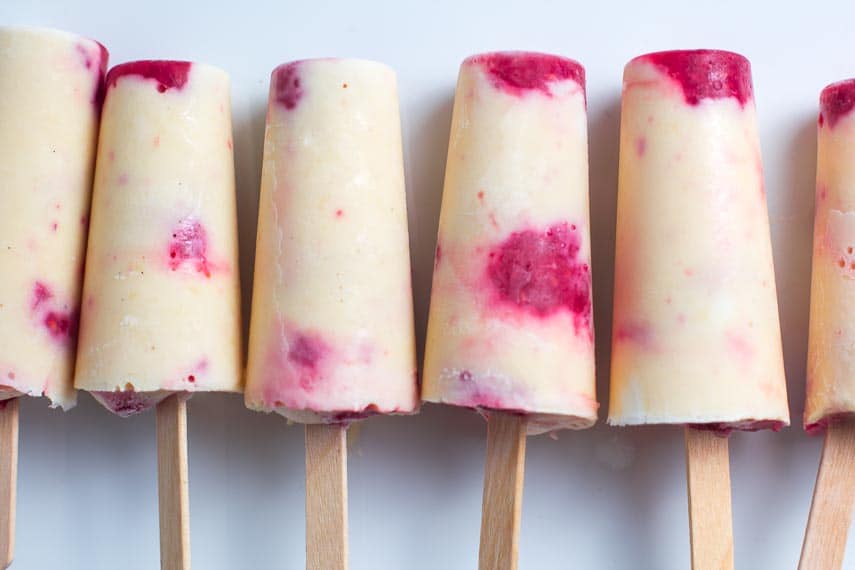
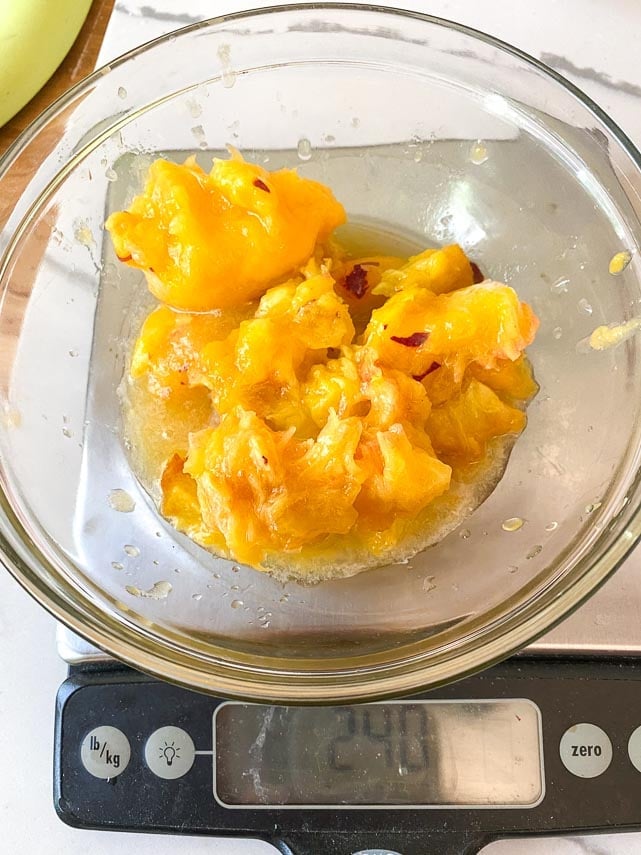
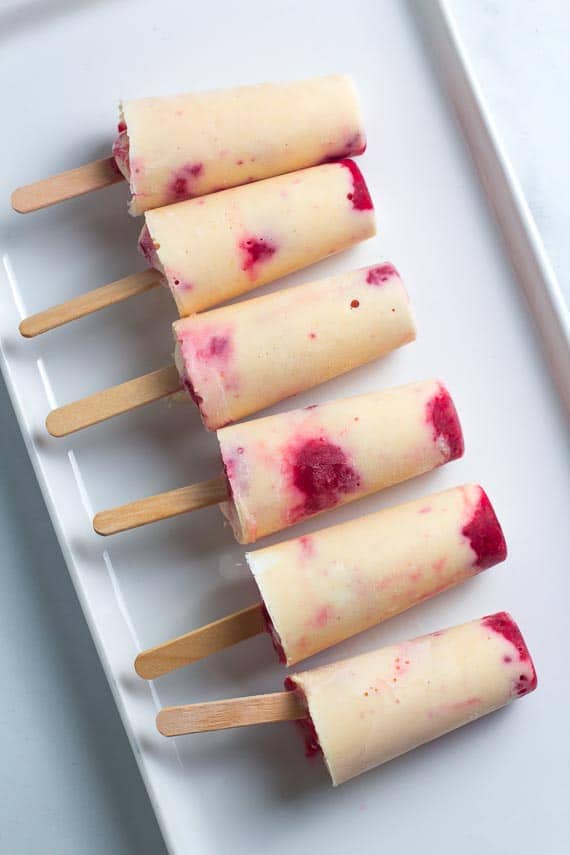
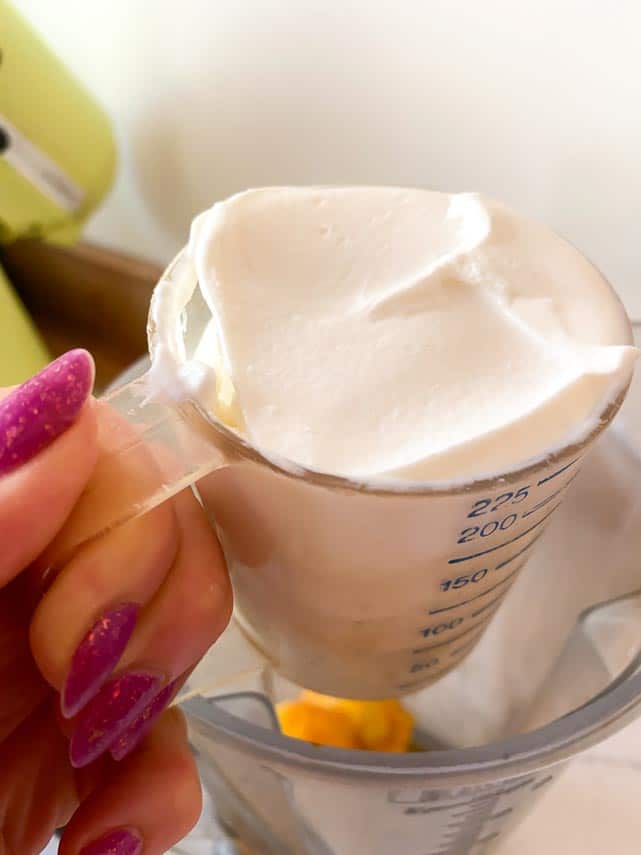
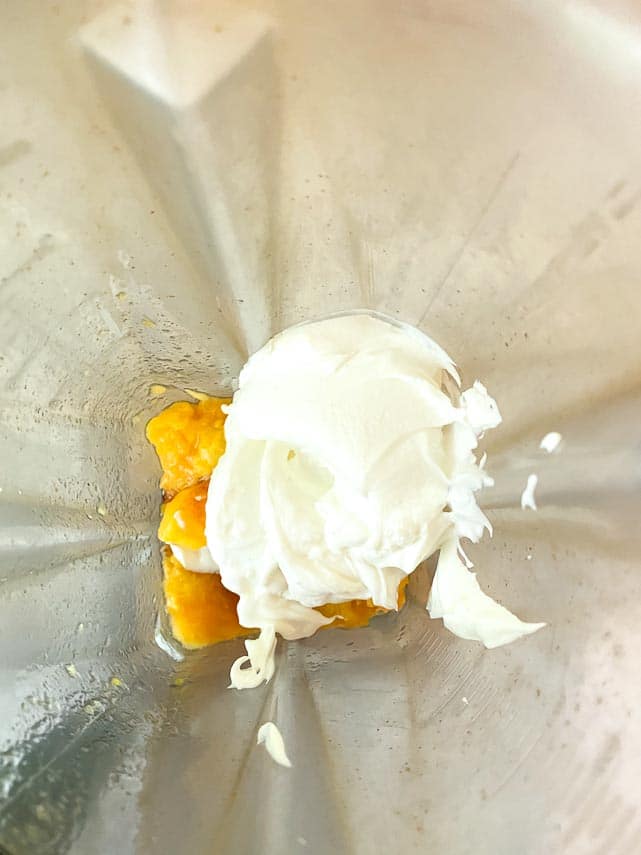
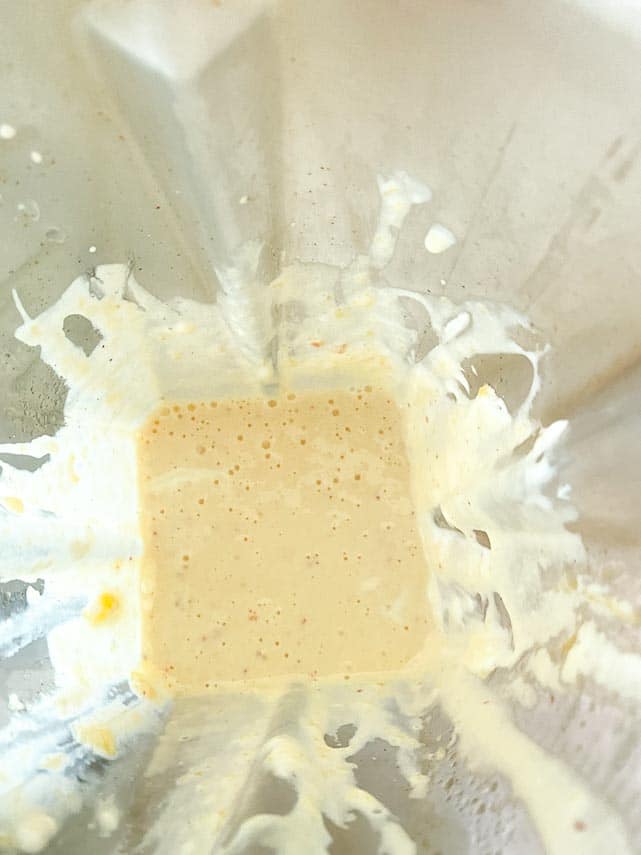
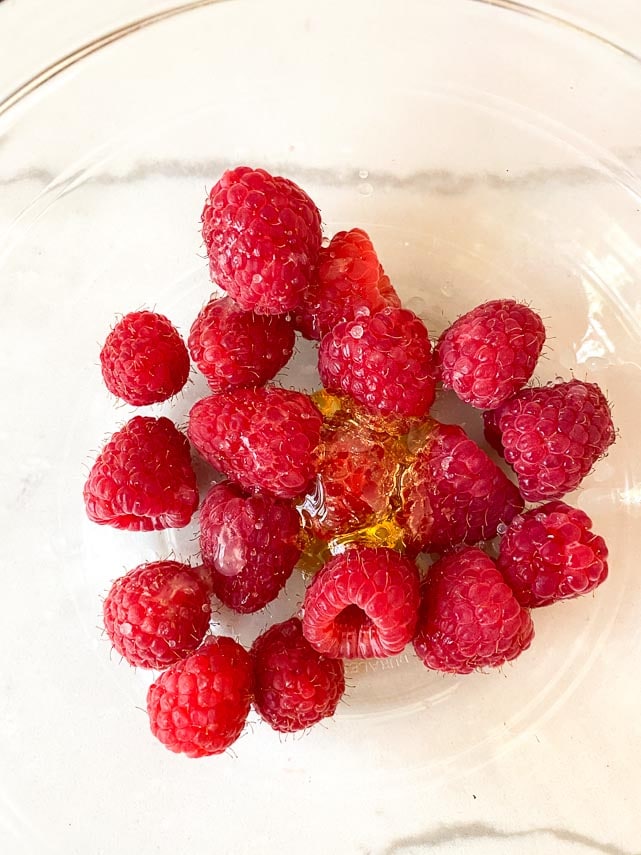
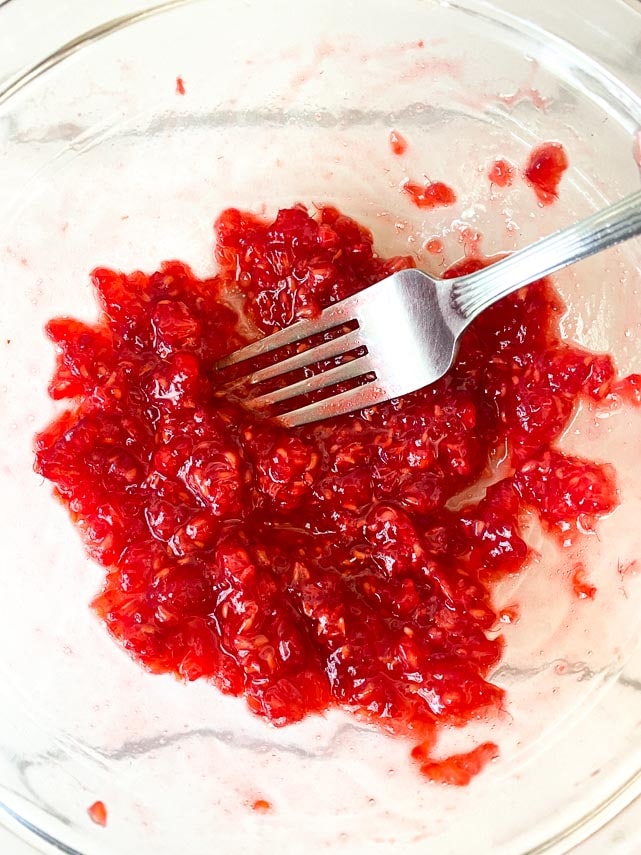

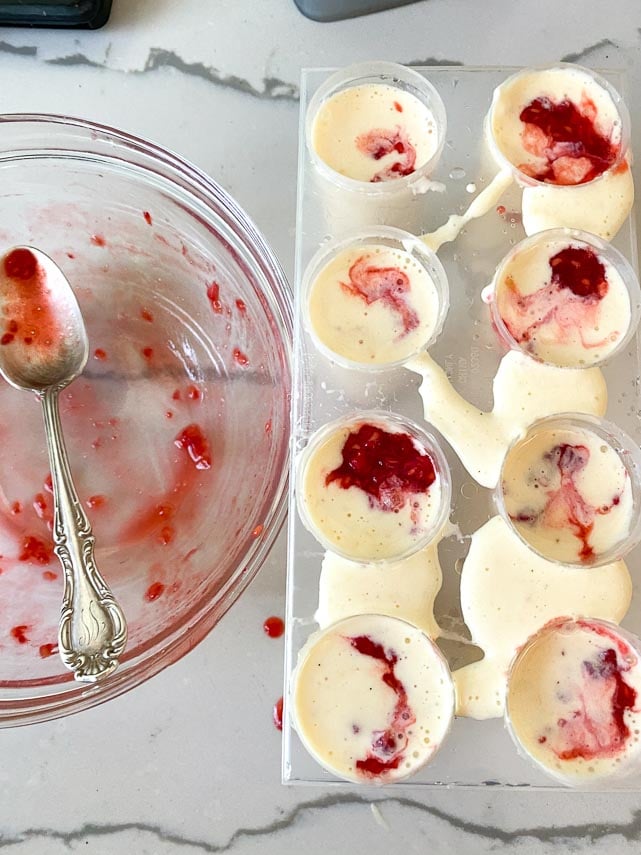
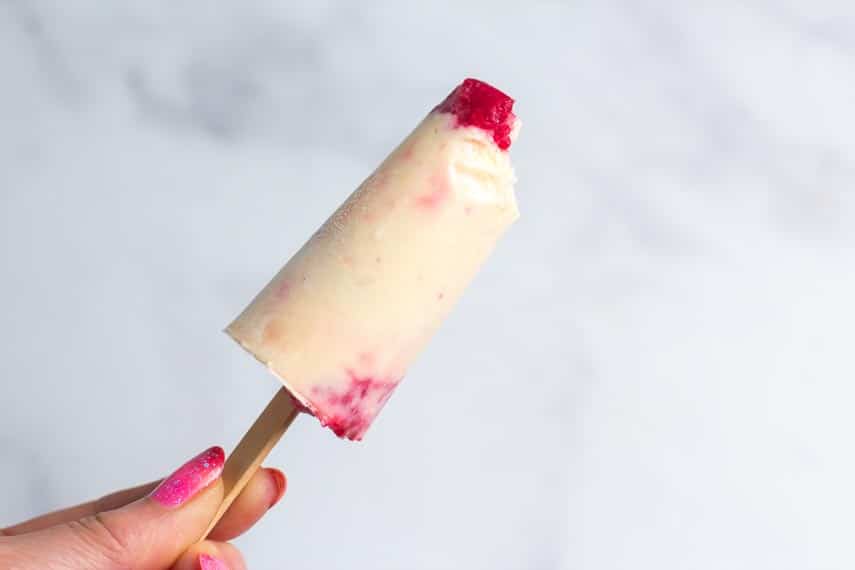
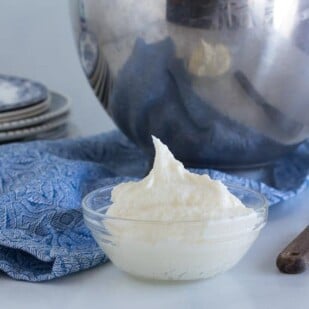
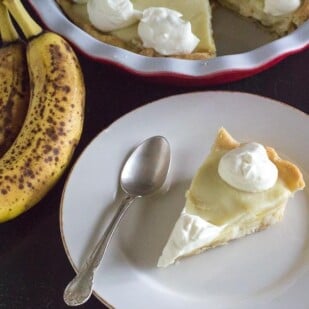



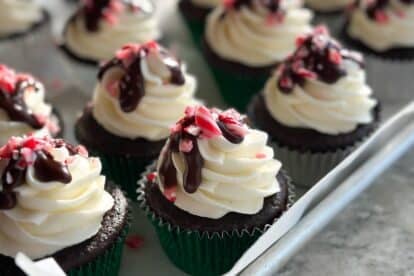
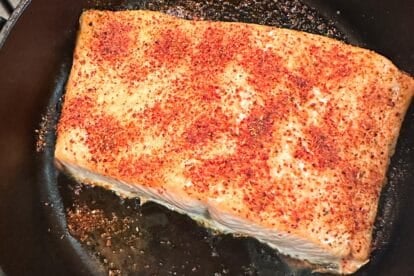
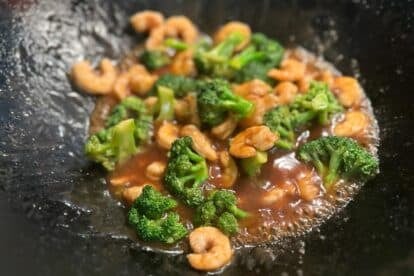
I made these yesterday, with ripe nectarines instead of peaches. They are so cute and fun to make! I found these popsicle molds on Amazon, and they were so easy to use, being silicone! I did have leftover yogurt mixture, but just froze it in a little bowl. Ouddy Popsicle Molds, Set of 2 Silicone Ice Pop Molds 4 Cavities Homemade Cake Pop Mold Oval with 50 Wooden Sticks for DIY Ice Cream (Multicolor)
So happy to hear that you had fun making them and that they worked out well. Always remember that when you make changes you have to re-calculate FODMAP load. In this case the nectarines are very close to peaches but also make sure that your serving size doesn’t change. In this case you would want to make sure that it made the same number of pops as my recipe. In other words that your Popsicles had the same value of mixture as mine. Hope you enjoyed them